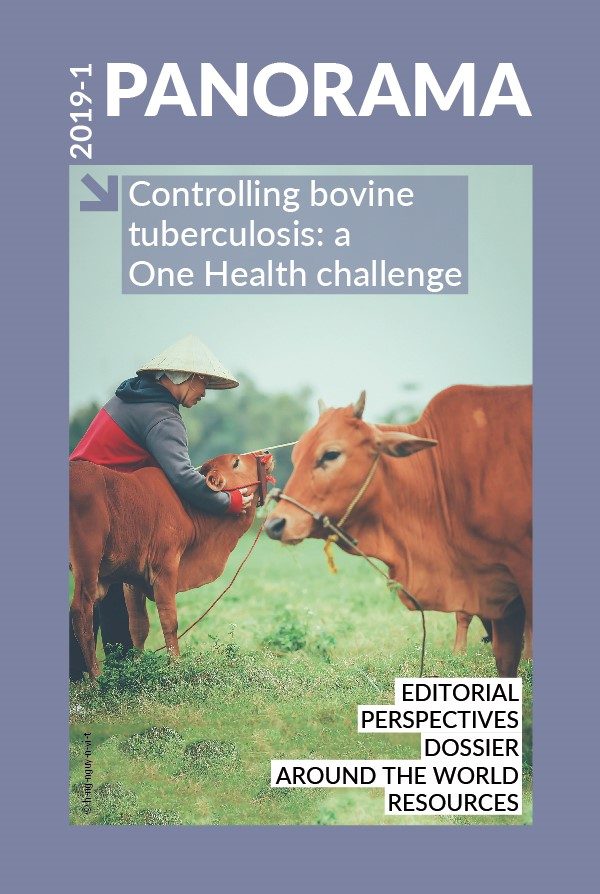Around the world Posted on 2019-05-21 16:58:49
Success stories
The Irish experience of the tuberculin test in bovine tuberculosis eradication
Keywords
Authors
Margaret Good(1)* & Anthony Duignan(2)
(1) Independent Researcher and Private Consultant, Dun Laoghaire, Co. Dublin, Ireland. Previously affiliated with the Department of Agriculture, Food and the Marine, Dublin, Ireland.
(2) Superintending Veterinary Inspector, Department of Agriculture, Food and the Marine, Dublin, Ireland.
* Corresponding author: mgood2510@gmail.com
The designations and denominations employed and the presentation of the material in this article do not imply the expression of any opinion whatsoever on the part of the OIE concerning the legal status of any country, territory, city or area or of its authorities, or concerning the delimitation of its frontiers and boundaries.
The views expressed in this article are solely the responsibility of the author(s). The mention of specific companies or products of manufacturers, whether or not these have been patented, does not imply that these have been endorsed or recommended by the OIE in preference to others of a similar nature that are not mentioned.
The Irish national bTB eradication programme commenced in 1954 with 80% herd and 17% animal (22% cows) prevalence rates [1]. The single intradermal comparative tuberculin test using avian and mammalian tuberculin purified protein derivatives (PPDs) addressed non-specific sensitisation by abundant environmental mycobacteria. Skin testing requires minimal technology (Fig. 1) and, being safe, allows testing from birth [1, 2]. Progress was dramatic to 1965 but stalled at ~30,000 reactors removed/year until 2000 (Fig. 2).
Programme milestones
- 1974, first tuberculous badger detected, by the 1980s infected badgers found countrywide;
- 1975-1976, programme interruption (fewer reactors);
- 1976-1977, bovine replaced human tuberculin PPD (more sensitive and specific);
- 1978-1979, tuberculin potency fell, affecting bTB detection (initiated routine potency assay on infected cattle as critical quality control);
- 1980, tuberculin supplier changed;
- 1989, TB investigation unit (now CVERA) founded to investigate bTB and improve eradication, using science-informed policy in a national context;
- 1990, endemically infected badgers recognised as tuberculosis maintenance host (culled since 2003 when epidemiological investigation associated them with bTB breakdowns);
- 1991, interferon-γ assay (using tuberculin) used in bTB herds to remove additional infected cattle (legally recognised 2005);
- 1992, PPD potency standardised for Irish programme at bovine 30,000 IU/ml, avian 25,000 IU/ml (giving optimal sensitivity/specificity). Studies showed imprecise guinea pig bio-assay potency estimates and a significant fall in the number of infected cattle detected using low potency tuberculin but if standard potency maintained there was no apparent impact from changing supplier/manufacturer [1, 3].
Clinical bovine tuberculosis and human zoonotic tuberculosis are now uncommon in Ireland
The Irish programme uses tuberculin PPD and optimal test methodologies for bTB eradication; considers disease epidemiological profile, controls non-bovine maintenance hosts, pursues rigorous quality controls (including tuberculin potency assay), evaluates surveillance protocols, test performance, policy efficacy and outcomes, and is modified reflecting findings and scientific advances [2, 3]. Clinical bTB and human zoonotic tuberculosis [4] are now uncommon.


http://dx.doi.org/10.20506/bull.2019.1.2929
References
- Good M. (2011). – The tuberculin test and its role in the strategic management and eradication of tuberculosis in cattle. Utrecht University Repository (Dissertation). Publisher: Utrecht University. ISBN: 978-90-393-5645-6.
- Good M., Bakker D., Duignan A. & Collins D.M. (2018). – The history of in vivo tuberculin testing in bovines: tuberculosis, a ‘One Health’ issue. Front. Vet. Sci., 5 (Art 59). https://doi.org/10.3389/fvets.2018.00059.
- Good M. & Duignan A. (2017). – Veterinary handbook for herd management in the bovine TB eradication programme. Department of Agriculture, Food and the Marine, Dublin, Ireland.
- World Health Organization (WHO), World Organisation for Animal Health (OIE) & Food and Agriculture Organization of the United Nations (FAO) (2017). – Roadmap for Zoonotic Tuberculosis.












